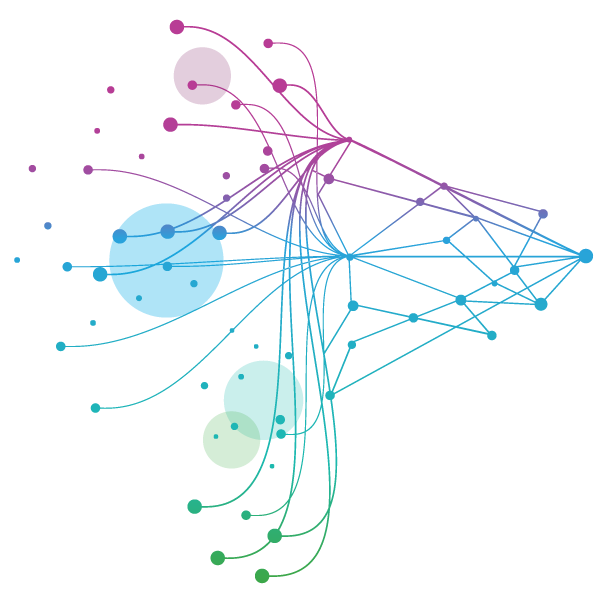The economic and environmental benefits of thermostable vaccines






















- Blogs
- Drivers for Successful Healthy Ageing Through Immunization
As the global population continues to age, the need for robust vaccination strategies to support healthy ageing becomes increasingly critical. With the percentage of individuals aged 60 and above on the rise, particularly in regions like the EU4 (France, Germany, Italy, Spain), UK, China, and Japan, ensuring that older adults remain healthy and productive is essential for societal and economic well-being. In this article, we delve into the importance of healthy aging, how vaccination can be a tool to optimize and improve both individual health and that of society, and future considerations for improving adult vaccination policies.
The Ageing Population and Its Implications
The global demographic landscape is shifting rapidly. In the EU4 (France, Germany, Italy, Spain), the UK, as well as in China and Japan, the proportion of people aged 60 and above has reached unprecedented levels. This trend is only expected to continue; by 2030, 1 in 6 people worldwide will be aged 60 years or over.1 This comes in combination with life expectancy continuing to rise, with the average citizen expected to live into their 80s in the EU4, UK, and Japan.2 However, life expectancy in ‘good health’ has remained broadly constant, which implies that the additional years are spent with health challenges.3 (See Figure 1)4.

In addition, what distinguishes this era from 50 years ago is not just longevity but the expectation of productivity. In the mid-20th century, many individuals retired by their early 60s, with retirement often marking a significant slowdown in activity. Today, however, retirement ages are being pushed back, with many people continuing to work well past 60. For example, the official retirement age in countries like Germany and the UK is now nearing 67, with discussions in some regions about extending it even further (see Figure 2)5-10.

This shift underscores the importance of maintaining health and functionality well into one’s 60s and beyond. Chronic illnesses or preventable diseases such as influenza, pneumonia, or shingles in this age group not only compromise individual well-being but also have broader implications for workforce productivity and healthcare systems.11
Current Vaccination Landscape for Older Adults
When it comes to immunization, current schedules and funding frameworks (reimbursement and/or tender) for individuals aged 60 and above in the EU4, UK, China, and Japan often prioritize high-risk groups rather than the broader age group, with vaccines only becoming more widely available for those aged 65 and older (see figure 3)12-23.

While this risk-based approach has been effective in targeting the most vulnerable populations, it leaves a portion of older adults unprotected. Many healthy individuals aged 60+—who may not fall into traditional "high-risk" categories—are still susceptible to vaccine-preventable diseases that can lead to hospitalization, long-term complications, or even death.11
The Economic and Societal Impact of Under-Vaccination
The consequences of inadequate vaccination in older adults extend beyond personal health. The indirect effects of not vaccinating this population are often overlooked. For example, an older worker who contracts influenza or pneumonia may face extended recovery periods, leading to lost productivity for employers and increased burdens on healthcare systems.20 To illustrate this point, a framework to evaluate investments in health from a government perspective shows that every €1 invested in adult vaccination commencing at the age of 50 years would yield €4.02 of future economic revenue for government over the lifetime of the cohort.11,20 In Europe, vaccination prevents 1.6 to 2.1 million influenza cases annually, translating into €332 million in averted costs.26
As retirement ages rise and older adults, still working in their 60s, remain active contributors to the economy, vaccine-preventable diseases can result in significant economic costs. In the European Union, direct & indirect costs of seasonal influenza are estimated at €6 billion to €14 billion annually.20 These figures highlight the urgent need for broader immunization strategies that ensure healthier ageing and sustained workforce participation.
The Future of Immunization for Healthy Ageing
A Shift Toward Adult-Focused Vaccination Pipelines
The good news is that the vaccine development landscape is evolving. According to recent data, nearly 80% of vaccines currently in the pipeline are focused on adults, including those for older populations (see figure 4)24. These innovations range from enhanced influenza vaccines to novel immunizations targeting diseases like RSV (respiratory syncytial virus) and Clostridioides difficile infection (CDI).24 However, this raises critical questions about how national immunization programs (NIPs) will adapt to accommodate an expanding portfolio of vaccines for older adults in terms of funding and inclusion in an already crowded vaccination schedule.

Prioritization Challenges: Risk vs. Age
With the influx of new vaccines targeting the 60+ demographic, policymakers will need to address key challenges related to prioritization. Should vaccination schedules continue to focus on risk-based criteria, or is it time to adopt age-based recommendations? Countries like France are already making strides in this direction. In January 2025, the HAS updated France's pneumococcal vaccination guidelines explicitly recognizing age as a risk factor, moving away from a purely comorbidity-driven approach.23 This shift reflects a growing acknowledgment that age alone can increase susceptibility to certain diseases, making universal vaccination for older adults a more plausible strategy.
Paediatrics vs. Adults Vaccination
Another pressing concern is how to allocate limited healthcare budgets between paediatric and adult immunization programs. Despite the benefits of vaccination, budgets attributed to prevention programs and vaccination by European member states remain low as vaccine expenditures represent less than 0.5% of healthcare spending.26 Historically, national immunization programs have prioritized childhood vaccination due to the significant public health gains achieved through the prevention of diseases like measles, polio, and diphtheria.25 Spending on adult vaccines is a small fraction of total pharmaceutical expenditure, even in developed regions where it is less than 2%. Over time, this proportion has seen a slight increase in Europe and North America, but remains very low in other regions, ranging from 0.1% to 0.5% (See Figure 5).27 However, as the population ages and adult vaccines become more prevalent, there is a growing need to balance resources between paediatrics and older adults, or find additional funding.

The current vaccination coverage rates (VCRs) illustrate this disparity. While paediatric VCRs in most countries are consistently high, the rates for adult vaccinations—particularly among the elderly—remain far lower. For example, influenza vaccination rates in older adults often fall short of the World Health Organization's target of 75%, despite the clear benefits of preventing complications and hospitalizations.28 As an illustration, in France influenza vaccination coverage is ~50% in the >65 year old population.29
Additional Barriers to Vaccination for Older Adults
Beyond spending and inclusion in the national vaccination schedule, there are a number of additional barriers that contribute to low vaccination rates amongst older adults.
- Vaccine Hesitancy: Older adults may be sceptical of vaccine efficacy or concerned about potential side effects. The pandemic has also exacerbated the issue of vaccine hesitancy, identified by the WHO in 2019 as a top-10 threat to global health.30 Building trust through clear communication and education is therefore essential.
- Access Challenges: Limited access to healthcare facilities or vaccination centres can deter older individuals, particularly those in rural or underserved areas.
- Healthcare Pathways: In some countries, older adults rely on general practitioners for vaccination, which can create bottlenecks. Expanding the role of pharmacists and other healthcare providers could help address this issue.
Addressing the coverage gap will require not only increased funding but also innovative strategies to improve vaccine uptake among the elderly.
Recommendations for Improving Adult Immunization
To ensure that vaccination becomes a cornerstone of healthy ageing, policymakers, healthcare providers, and stakeholders must adopt a more holistic approach. Enhancing adult immunization strategies not only supports individual wellbeing but also contributes to maintaining workforce productivity and provides broader economic support as the population ages. Below are key recommendations for driving successful immunization strategies for the 60+ population:
1. Recognize the Productivity Benefits of Healthy Ageing
As retirement ages continue to rise, the link between health and productivity becomes more pronounced. Vaccination is not just a public health issue but also an economic imperative. Employers could play a more active role in promoting immunization by offering on-site vaccination clinics, or including adult vaccines in employee health benefits. By protecting their older workforce, businesses can reduce absenteeism and maintain productivity.
2. Continued Shift To Age-Based Recommendations
Age itself is a significant factor in disease susceptibility, as demonstrated by France’s recent decision to revise its pneumococcal vaccination guidelines. Other countries should follow suit and continue on the trend of incorporating age-based recommendations into their immunization schedules for older adults. Currently several vaccinations are for 65+; there could be an argument to shift this to younger ages (as seen in Germany, where the influenza and herpes zoster vaccines are recommended for 60+) to improve the years of ‘healthy’ life, particularly given the aging population, later retirement ages, and socio-economic pressures. This approach would simplify vaccination strategies, making it easier to implement universal programs for the 60+ population.
3. Increase Funding for Adult Vaccination Programs
Governments and healthcare systems need to allocate more resources to adult vaccination programs. This includes not only funding for the vaccines themselves but also for public awareness campaigns, healthcare provider training, and infrastructure improvements to make vaccination more accessible. Given the economic benefits of keeping older adults healthy and productive, such investments could yield significant returns by reducing healthcare costs and maintaining workforce participation.
4. Address Vaccine Hesitancy and Accessibility Barriers
Educational campaigns tailored to older adults can help combat vaccine hesitancy by dispelling myths and emphasizing the benefits of immunization. These campaigns should leverage trusted voices, such as general practitioners, community leaders, and even family members, to encourage vaccine uptake. Additionally, improving accessibility through mobile vaccination units, home visits for the immobile elderly, and digital scheduling platforms can remove logistical hurdles that prevent older adults from getting vaccinated.
5. Innovate New Vaccination Pathways
The traditional model of vaccination primarily through healthcare clinics may no longer be sufficient to meet the needs of an ageing population. Innovative approaches, such as offering vaccinations at workplaces, nursing homes, and community centres, can make immunization more convenient for older adults. Digital health records and reminders could also play a crucial role in ensuring that individuals stay up to date with their recommended vaccines. For example, personalized vaccination schedules delivered via mobile apps could help older adults track their immunization status and receive timely reminders for booster doses.
6. Expand the Role of New Vaccinators
Pharmacists, in particular, have become increasingly trusted healthcare providers, especially in the wake of the COVID-19 pandemic. Many older adults already rely on pharmacists for medication consultations and minor health advice, making pharmacies an accessible and convenient venue for vaccinations. Training and authorizing more healthcare professionals to administer vaccines can help reduce bottlenecks in traditional healthcare pathways and improve vaccine uptake.
Sources
1. WHO, Ageing and Health, Oct 2024: https://www.who.int/news-room/fact-sheets/detail/ageing-and-health
2. Worldometer, Life Expectancy of the World Population, 2025: https://www.worldometers.info/demographics/life-expectancy/
3. Toute L’Europe, [Cartes] L'espérance de vie en Europe, March 2025: https://www.touteleurope.eu/societe/l-esperance-de-vie-en-europe/
4. Eurostat, Population structure indicators at national level, 2025: https://ec.europa.eu/eurostat/databrowser/product/page/demo_pjanind__custom_16069544
5. Trading economics, Retirement Age Men, 2025: https://tradingeconomics.com/country-list/retirement-age-men
6. Henning et al., Work, Aging, and Retirement, 2022: https://academic.oup.com/workar/article/8/3/304/6432422
7. Liu and Xu, Retirement policy, employment status, and gender pay gap in urban China, 2023:
https://www.sciencedirect.com/science/article/abs/pii/S1049007823000076#:~:text=China's%20current%20retirement%20policy%20has,10%20years%20earlier%20than%20men.8. Conversable Economist, Retirement Ages: Some International Comparisons, 2023: https://conversableeconomist.com/2023/02/01/retirement-ages-some-international-comparisons/
9. Belloni et al., Social Security Wealth in Italy: 20 years of pension reforms, 2010: https://www.bancaditalia.it/pubblicazioni/altri-atti-convegni/2015-analysis-household-finances/papers/1.Brugiavini.pdf
10. Blanchet, Pensions in France: A look back at 30 years of debate and reform, 2020: https://shs.cairn.info/journal-population-and-societies-2020-2-page-1?lang=en
11. ILCUK, Adult vaccination: A key component of healthy ageing, 2013: https://ilcuk.org.uk/wp-content/uploads/2018/11/Adult-vaccination_a-key-component-of-health-ageing.pdf
12. ECDC Vaccine Scheduler: https://vaccine-schedule.ecdc.europa.eu/
13. GSK, Arexvy approval expanded to adults aged 50-59 at increased risk of severe RSV disease in Japan, 2024: https://www.gsk.com/en-gb/media/press-releases/arexvy-approval-expanded-to-adults-aged-50-59-at-increased-risk-of-severe-rsv-disease-in-japan/
14. Furuichi et al., Trends in Pertussis Antibody Titers after DTaP Vaccination of Healthcare Workers at a Tertiary Children's Hospital in Japan, 2025: https://academic.oup.com/ofid/article/12/Supplement_1/ofae631.246/7987021#google_vignette
15. GSK, Japan’s Ministry of Health, Labour and Welfare approves Shingrix for the prevention of shingles in at-risk adults aged 18 and over, 2023: https://www.gsk.com/en-gb/media/press-releases/japan-s-ministry-of-health-labour-and-welfare-approves-shingrix-for-the-prevention-of-shingles-in-at-risk-adults-aged-18-and-over/#:~:text=Approval%20expands%20the%20number%20of,increased%20risk%20of%20the%20condition.
16. Gov.uk, Complete routine immunisation schedule from 1 January 2025 https://www.gov.uk/government/publications/the-complete-routine-immunisation-schedule/the-complete-routine-immunisation-schedule-from-february-2022
17. Zhang and Liu, Optimization of Diphtheria, Tetanus and Pertussis (DTP) vaccination strategy in China, 2025: https://www.journalofinfection.com/article/S0163-4453(25)00010-6/fulltext
18. WHO Vaccine scheduler, 2025: https://immunizationdata.who.int/global?topic=Vaccination-schedule&location=
19. GSK, GSK’s regulatory application for Shingrix for the prevention of shingles in at-risk adults aged 18 and over accepted for review by China National Medical Products Administration, 2024: https://www.gsk.com/en-gb/media/press-releases/regulatory-application-for-shingrix-for-the-prevention-of-shingles-adults-aged-18-and-over-accepted-for-review-in- china/#:~:text=GSK's%20regulatory%20application%20for%20Shingrix%20for%20the,review%20by%20China%20National%20Medical%20Products%20Administration.&text=Recombinant%20Zoster%20Vaccine%20(RZV)%20is%20a%20non%2Dlive%2C,in%20adults%20aged%2050%20years%20and%20over.
20. Preaud et al., Annual public health and economic benefits of seasonal influenza vaccination: a European estimate, 2013: https://pmc.ncbi.nlm.nih.gov/articles/PMC4141103/
21. STIKO, 2025: https://www.rki.de/EN/Topics/Infectious-diseases/Immunisation/STIKO/STIKO-recommendations/recommendations_content.html
22. HAS, Stratégie de vaccination contre les infections par le VRS chez l’adulte âgé de 60 ans et plus, 2024: https://www.has-sante.fr/jcms/p_3550892/fr/strategie-de-vaccination-contre-les-infections-par-le-vrs-chez-l-adulte-age-de-60-ans-et-plus-place-du-vaccin-mresvia-moderna
23. HAS, Pneumocoques : élargir la vaccination à tous les adultes de 65 ans et plus, 2025: https://www.has-sante.fr/jcms/p_3586294/fr/pneumocoques-elargir-la-vaccination-a-tous-les-adultes-de-65-ans-et-plus
24. Vaccines Europe pipeline review, 2024: https://www.vaccineseurope.eu/vaccines-ecosystem/vaccines-pipeline/
25. WHO, Essential Programme on Immunization, 2024: https://www.who.int/teams/immunization-vaccines-and-biologicals/essential-programme-on-immunization#:~:text=Today%20every%20country%20in%20the,Immunization%20(EPI)%20was%20initiated.
26. Faivre et al., Immunization funding across 28 European countries, 2021: https://www.tandfonline.com/doi/full/10.1080/14760584.2021.1905257#abstract
27. IQVIA, Trends in Global Adult Vaccination: Impact of COVID-19, 2023: https://www.iqvia.com/insights/the-iqvia-institute/reports-and-publications/reports/trends-in-global-adult-vaccination
29. Sante publique France, Vaccination en France. Bilan de la couverture vaccinale en 2023, 2024: https://www.santepubliquefrance.fr/determinants-de-sante/vaccination/documents/bulletin-national/vaccination-en-france.-bilan-de-la-couverture-vaccinale-en-2023
30. IQVIA, Race for Immunity: Exploring the Evolving Landscape of the Vaccines Market, 2023: https://www.iqvia.com/library/white-papers/race-for-immunity-exploring-the-evolving-landscape-of-the-vaccines-market
Related solutions
A forward-looking perspective on vaccine innovation





